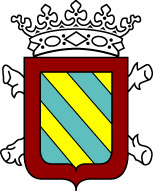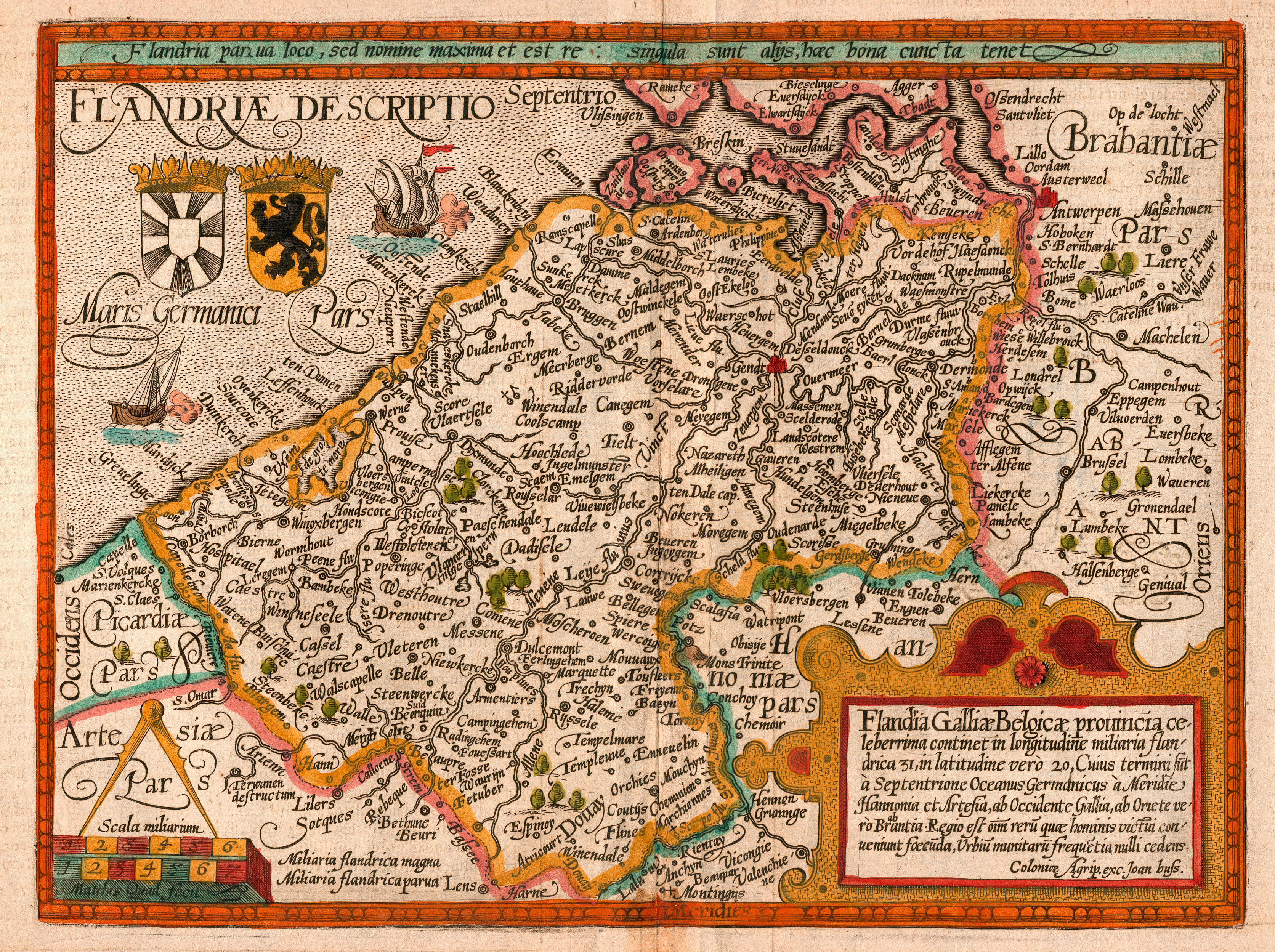|
Sophie Cauvin
Sophie Cauvin (born 2 April 1968 in Braine-l'Alleud) is a Belgian painter. Personal background Sophie Cauvin was born on 2 April 1968 in Braine-l'Alleud, Walloon Brabant, Belgium. She studied at The Royal Academies for Science and the Arts of Belgium. Exhibitions * 2004: 5 Bruxelloises Art and Advice at Hasselt Gallery * 2004: Galerie Sans Nom, Brussels * 2005: Personal exhibition at Lucca Gallery New York City * 2006: Galerie Grard Neuchâtel, Switzerland * 2007: Personal exhibition at Gaudaen Galerij, Grimbergen * 2009: Women Art Show, Brussels Brussels (french: Bruxelles or ; nl, Brussel ), officially the Brussels-Capital Region (All text and all but one graphic show the English name as Brussels-Capital Region.) (french: link=no, Région de Bruxelles-Capitale; nl, link=no, Bruss ... * 2010: Guy Pieters Gallery Knokke Belgique Further reading * Ladolfi, Giuliano (2012). ''Sophie Cauvin. Ediz. italiana, inglese, francese e tedesca'', Giuliano Ladolfi Editore, 30 ... [...More Info...] [...Related Items...] OR: [Wikipedia] [Google] [Baidu] |
Braine-l'Alleud
Braine-l'Alleud (; nl, Eigenbrakel ; wa, Brinne-l'-Alou) is a municipality of Wallonia located in the province of Walloon Brabant, Belgium, about south of Brussels. The municipality consists of the following districts: Braine-l'Alleud (including the hamlet of Sart-Moulin), Lillois-Witterzée, and Ophain-Bois-Seigneur-Isaac. Bordering Flanders, the town is home to a minority of Dutch speakers. The famous Lion of Waterloo, where the eponymous battle took place, is in the territory of Braine-l'Alleud. History Middle Ages Several archaeological finds point to prehistoric settlements in this area. The first historical mention of a parish on Braine-l'Alleud's current territory, then called ''Dudinsart'', dates from 1131, date at which Godfrey I, Duke of Brabant ceded it to the Abbey of Gembloux. The Duke, however, still owned exempt land (or franchise) on this territory, as specified in a legal document by Henry I dated 1197. The name of the municipality changed to the curren ... [...More Info...] [...Related Items...] OR: [Wikipedia] [Google] [Baidu] |
The Royal Academies For Science And The Arts Of Belgium
The Royal Academies for Science and the Arts of Belgium (RASAB) is a non-governmental association which promotes and organises science and the arts in Belgium by coordinating the national and international activities of its constituent academies such as the National Scientific Committees and the representation of Belgium in international scientific organisations. RASAB was formed as a non-profit organization (Association without lucrative purpose) in 2001 by the Dutch-speaking academy KVAB ( Koninklijke Vlaamse Academie van België voor Wetenschappen en Kunsten i.e. ''Royal Flemish Academy of Belgium for Science and the Arts'') and by the French-speaking academy ARB ( i.e. ''The Royal Academy of Science, Letters and Fine Arts of Belgium''). The association is headquartered in the buildings of the former Royal Stables at the Academy Palace, Hertogsstraat 1 Rue Ducale B-1000 Brussels. History Academies RASAB was founded in 2001 by the two Belgian academies which are connecte ... [...More Info...] [...Related Items...] OR: [Wikipedia] [Google] [Baidu] |
Belgians
Belgians ( nl, Belgen; french: Belges; german: Belgier) are people identified with the Kingdom of Belgium, a federal state in Western Europe. As Belgium is a multinational state, this connection may be residential, legal, historical, or cultural rather than ethnic. The majority of Belgians, however, belong to two distinct ethnic groups or ''communities'' ( nl, gemeenschap, links=no; french: communauté, links=no) native to the country, i.e. its historical regions: Flemings in Flanders, who speak Dutch; and Walloons in Wallonia, who speak French or Walloon. There is also a substantial Belgian diaspora, which has settled primarily in the United States, Canada, France, and the Netherlands. Etymology The 1830 revolution led to the establishment of an independent country under a provisional government and a national congress. The name "Belgium" was adopted for the country, the word being derived from ''Gallia Belgica'', a Roman province in the northernmost part of Gaul that, ... [...More Info...] [...Related Items...] OR: [Wikipedia] [Google] [Baidu] |
Walloon Brabant
Walloon Brabant (french: Brabant wallon ; nl, Waals-Brabant ; wa, Roman Payis) is a province located in Belgium's French-speaking region of Wallonia. It borders on (clockwise from the North) the province of Flemish Brabant (Flemish Region) and the provinces of Liège, Namur and Hainaut. Walloon Brabant's capital- and largest city is Wavre. The provincial population was recorded at 403,599 as of January 2019, giving a population density of . Etymology Walloon is a Belgian version of a old West Germanic word reconstructed as *walh (“foreigner, stranger, speaker of Celtic or Latin”). Brabant is from Old Dutch *brākbant (attested in Medieval Latin as pāgus brācbatensis, Bracbantum, Bracbantia), from Frankish, a compound of Proto-Germanic *brēk-, *brekaną (“fallow, originally 'to break'”) + *bant-, *bantō, *banti (“district, region”) Like the terms "Belgium" and "Flanders", the terms "Walloon" and "Brabant" are much older than the modern political entities which ... [...More Info...] [...Related Items...] OR: [Wikipedia] [Google] [Baidu] |
New York City
New York, often called New York City or NYC, is the List of United States cities by population, most populous city in the United States. With a 2020 population of 8,804,190 distributed over , New York City is also the List of United States cities by population density, most densely populated major city in the United States, and is more than twice as populous as second-place Los Angeles. New York City lies at the southern tip of New York (state), New York State, and constitutes the geographical and demographic center of both the Northeast megalopolis and the New York metropolitan area, the largest metropolitan area in the world by urban area, urban landmass. With over 20.1 million people in its metropolitan statistical area and 23.5 million in its combined statistical area as of 2020, New York is one of the world's most populous Megacity, megacities, and over 58 million people live within of the city. New York City is a global city, global Culture of New ... [...More Info...] [...Related Items...] OR: [Wikipedia] [Google] [Baidu] |
Switzerland
). Swiss law does not designate a ''capital'' as such, but the federal parliament and government are installed in Bern, while other federal institutions, such as the federal courts, are in other cities (Bellinzona, Lausanne, Luzern, Neuchâtel, St. Gallen a.o.). , coordinates = , largest_city = Zürich , official_languages = , englishmotto = "One for all, all for one" , religion_year = 2020 , religion_ref = , religion = , demonym = , german: Schweizer/Schweizerin, french: Suisse/Suissesse, it, svizzero/svizzera or , rm, Svizzer/Svizra , government_type = Federalism, Federal assembly-independent Directorial system, directorial republic with elements of a direct democracy , leader_title1 = Federal Council (Switzerland), Federal Council , leader_name1 = , leader_title2 = , leader_name2 = Walter Thurnherr , legislature = Fe ... [...More Info...] [...Related Items...] OR: [Wikipedia] [Google] [Baidu] |
Grimbergen
Grimbergen () is a municipality in the Belgian province of Flemish Brabant, 10 km north of the capital Brussels. It comprises the towns of Beigem, Grimbergen, Humbeek, and Strombeek-Bever. In 2017, it had a population of 37,030 and an area of 38.61 km2, giving a population density of 959 inhabitants per km2. Grimbergen is in the Dutch language area of Belgium. The French-speaking minority is represented by four members on the 30-seat local council. Grimbergen is mostly known for its Norbertine abbey and the beer once brewed there. Grimbergen's proximity to Brussels makes it a residential town for commuting. History Roman Empire and Middle Ages In Roman times, several important roads passed near the territory of present Grimbergen. A fort was built in the 8th century at the strategic point where the road crossed the river Zenne. The local lord soon acquired a large piece of territory in this area, extending to the rivers Scheldt, Rupel, and Dender. In the 12th ce ... [...More Info...] [...Related Items...] OR: [Wikipedia] [Google] [Baidu] |
Brussels
Brussels (french: Bruxelles or ; nl, Brussel ), officially the Brussels-Capital Region (All text and all but one graphic show the English name as Brussels-Capital Region.) (french: link=no, Région de Bruxelles-Capitale; nl, link=no, Brussels Hoofdstedelijk Gewest), is a region of Belgium comprising 19 municipalities, including the City of Brussels, which is the capital of Belgium. The Brussels-Capital Region is located in the central portion of the country and is a part of both the French Community of Belgium and the Flemish Community, but is separate from the Flemish Region (within which it forms an enclave) and the Walloon Region. Brussels is the most densely populated region in Belgium, and although it has the highest GDP per capita, it has the lowest available income per household. The Brussels Region covers , a relatively small area compared to the two other regions, and has a population of over 1.2 million. The five times larger metropolitan area of Brusse ... [...More Info...] [...Related Items...] OR: [Wikipedia] [Google] [Baidu] |
1968 Births
The year was highlighted by protests and other unrests that occurred worldwide. Events January–February * January 5 – " Prague Spring": Alexander Dubček is chosen as leader of the Communist Party of Czechoslovakia. * January 10 – John Gorton is sworn in as 19th Prime Minister of Australia, taking over from John McEwen after being elected leader of the Liberal Party the previous day, following the disappearance of Harold Holt. Gorton becomes the only Senator to become Prime Minister, though he immediately transfers to the House of Representatives through the 1968 Higgins by-election in Holt's vacant seat. * January 15 – The 1968 Belice earthquake in Sicily kills 380 and injures around 1,000. * January 21 ** Vietnam War: Battle of Khe Sanh – One of the most publicized and controversial battles of the war begins, ending on April 8. ** 1968 Thule Air Base B-52 crash: A U.S. B-52 Stratofortress crashes in Greenland, discharging 4 nuclear bombs. * ... [...More Info...] [...Related Items...] OR: [Wikipedia] [Google] [Baidu] |
Living People
Related categories * :Year of birth missing (living people) / :Year of birth unknown * :Date of birth missing (living people) / :Date of birth unknown * :Place of birth missing (living people) / :Place of birth unknown * :Year of death missing / :Year of death unknown * :Date of death missing / :Date of death unknown * :Place of death missing / :Place of death unknown * :Missing middle or first names See also * :Dead people * :Template:L, which generates this category or death years, and birth year and sort keys. : {{DEFAULTSORT:Living people 21st-century people People by status ... [...More Info...] [...Related Items...] OR: [Wikipedia] [Google] [Baidu] |
21st-century Belgian Women Artists
The 1st century was the century spanning AD 1 ( I) through AD 100 ( C) according to the Julian calendar. It is often written as the or to distinguish it from the 1st century BC (or BCE) which preceded it. The 1st century is considered part of the Classical era, epoch, or historical period. The 1st century also saw the appearance of Christianity. During this period, Europe, North Africa and the Near East fell under increasing domination by the Roman Empire, which continued expanding, most notably conquering Britain under the emperor Claudius (AD 43). The reforms introduced by Augustus during his long reign stabilized the empire after the turmoil of the previous century's civil wars. Later in the century the Julio-Claudian dynasty, which had been founded by Augustus, came to an end with the suicide of Nero in AD 68. There followed the famous Year of Four Emperors, a brief period of civil war and instability, which was finally brought to an end by Vespasian, ninth Roman emperor, a ... [...More Info...] [...Related Items...] OR: [Wikipedia] [Google] [Baidu] |





